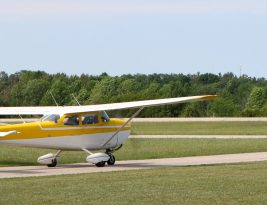Did you know the percentage of oxygen in the atmosphere is a constant 21% regardless of altitude? Well it’s true! So you may be wondering why then that it gets harder to breath as you increase in altitude. The simple answer is quantity and pressure. As you increase in altitude, the
…Category: Ground School
View All CategoriesAircraft are flown at high altitudes for two reasons. First, an aircraft flown at high altitude consumes less fuel for a given airspeed than it does for the same speed at a lower altitude because the aircraft is more efficient at a high altitude. Second, bad weather and turbulence may
…Tomatoflames, gooseacat, flaps, apes, grabcard, decarat… My spellcheck is going wild right now with red squiggly lines. Spellcheck settle down, I understand these are not words nor did I misspell them. The aforementioned are actually aviation mnemonics to help pilots remember the minimum instruments and equipment required for flight.
Careful planning for a flight on instruments is important. Besides satisfying normal IFR requirements, an instrument pilot flying in clouds or at night must be conscious of high terrain or obstacles that cannot be seen, and ensure that a safe altitude above them is maintained. You must be aware of
…Of all the senses, vision is the most important for safe flight. Most of the things perceived while flying are visual or heavily supplemented by vision. As remarkable and vital as it is, vision is subject to limitations, such as illusions and blind spots. The more a pilot understands about
…This week we’re featuring an excerpt from the just-released latest edition of the Risk Management Handbook (FAA-H-8083-2). This FAA handbook provides tools to help pilots determine and assess each situation for the safest possible flight with the least amount of risk. This handbook presents methods pilots can
…The Federal Aviation Administration (FAA) has recently released a new training aid, Ice Induced Stall Pilot Training. This 30-minute video covers the phenomenon of tailplane and wing stall icing conditions as well as icing certification rules and recommended cockpit procedures to mitigate ice induced stalls. As a
…[Update: In December 2022, the FAA published the Aviation Weather Handbook (FAA-H-8083-28) which replaced Advisory Circulars 00-6, 00-45 and 00-54.]
Adverse wind is a category of hazardous weather that is responsible for many weather-related accidents. Adverse winds include: crosswinds, gusts, tailwind, variable wind, and a
…

